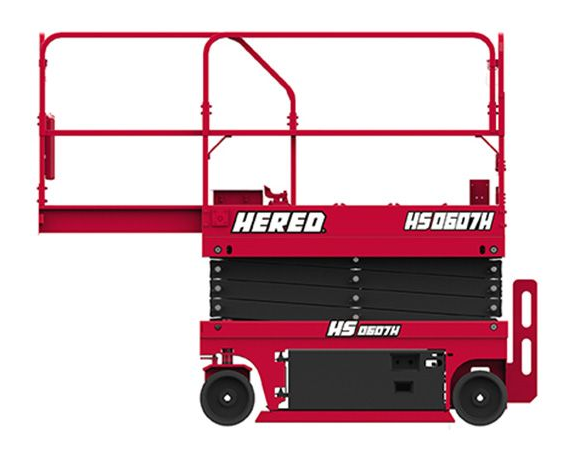Electric vs Non-Electric Scissor Lifts: A Comprehensive Comparison
Introduction
When it comes to elevating tasks, scissor lifts are essential equipment in various industries, from construction to maintenance and warehousing. Choosing between an electric or non-electric scissor lift can significantly impact efficiency, cost, and suitability for specific environments. This comprehensive comparison will help you understand the differences and guide you in making an informed decision.
What are Scissor Lifts?
Scissor lifts are mobile platforms that elevate workers and equipment vertically. Named after their crisscrossing support structure, these lifts are used for various applications like installing fixtures, performing maintenance, and accessing high storage areas. Their versatility makes them invaluable in both indoor and outdoor settings.
Electric Scissor Lifts
Features and Characteristics
Electric scissor lifts operate on rechargeable batteries, offering a quiet and emission-free lifting solution. They are designed for environments where noise and pollution are concerns, making them ideal for indoor use and areas with stringent environmental standards.
Pros and Cons
Pros:
- Quiet Operation: Perfect for noise-sensitive environments such as hospitals or offices.
- Zero Emissions: Environmentally friendly, with no exhaust emissions.
- Lower Operating Costs: Reduced fuel and simpler maintenance due to fewer mechanical parts.
Cons:
- Limited Runtime: Dependent on battery life, which requires recharging or swapping batteries.
- Less Powerful: Generally have lower lifting capacities compared to non-electric models.
Non-Electric Scissor Lifts
Features and Characteristics
Non-electric scissor lifts, powered by diesel or gasoline engines, are built to tackle more demanding tasks in tougher environments. They excel in providing powerful, continuous operation for extended periods without needing recharges.
Pros and Cons
Pros:
- Higher Power and Capacity: Capable of handling heavier loads and extended use without needing recharging.
- Versatility: Suitable for a wide range of outdoor and off-road applications.
- Continuous Operation: Ideal for long-duration projects where downtime for recharging is not feasible.
Cons:
- Noise and Emissions: Generate noise and exhaust, which can be problematic in indoor or eco-sensitive areas.
- Higher Maintenance Costs: More complex engines require frequent maintenance and higher operational costs.
Performance Comparison
Efficiency and Power Source
Electric scissor lifts are more energy-efficient, providing a cleaner and quieter operation. However, non-electric lifts offer superior power and are better suited for heavy-duty applications and environments lacking electric infrastructure.
Noise Levels and Environmental Impact
Electric lifts are preferred for indoor or noise-sensitive areas due to their quiet operation. Non-electric lifts, while powerful, produce more noise and emissions, making them less ideal for indoor use or in locations with strict environmental regulations.
Operational Costs
Initial Investment
Electric scissor lifts typically have a higher upfront cost due to their advanced battery technology. However, their long-term savings on fuel and maintenance can offset the initial expense.
Maintenance and Energy Costs
Electric lifts tend to have lower maintenance costs because they have fewer moving parts and no need for fuel. Non-electric lifts incur higher operational costs due to fuel consumption and the need for regular engine maintenance.
Suitability for Different Environments
Indoor vs Outdoor Use
Electric scissor lifts are excellent for indoor applications where quiet, emission-free operation is crucial. Non-electric lifts are more suitable for outdoor use, especially on uneven terrain or in areas without reliable access to electrical power.
Terrain Adaptability
Non-electric lifts are often equipped with rugged tires and enhanced stability features, making them ideal for rough or uneven terrains. Electric lifts perform best on smooth, flat surfaces typically found in indoor settings.
Safety Considerations
Safety Features of Electric Lifts
Electric scissor lifts often include advanced safety features like automatic braking, tilt sensors, and emergency lowering capabilities. These features enhance their safety profile, especially in confined or controlled environments.
Safety Features of Non-Electric Lifts
Non-electric lifts also offer essential safety features, such as stabilizing outriggers and load-sensing systems. However, they may not include the sophisticated electronics found in electric models.
Flexibility and Mobility
Maneuverability and Ease of Use
Electric scissor lifts are typically more compact and easier to maneuver in tight spaces, making them ideal for indoor work. Non-electric lifts, while powerful and better suited for rough terrain, can be bulkier and harder to navigate indoors.
Load Capacity and Reach
Non-electric scissor lifts generally offer higher load capacities and greater reach, making them suitable for more demanding tasks. Electric lifts, although capable, may have lower capacities but are sufficient for most indoor applications.
Future Trends
Growth of Electric Scissor Lifts in the Market
With increasing environmental regulations and the demand for quieter, cleaner operations, the market for electric scissor lifts is expected to grow. Innovations in battery technology and the need for sustainable solutions will drive their adoption.
Prospects for Non-Electric Scissor Lifts
Non-electric scissor lifts will continue to be essential for heavy-duty and outdoor applications. Ongoing improvements in engine efficiency and emissions reduction will enhance their appeal for various challenging environments.
Conclusion
Deciding between electric and non-electric scissor lifts depends on your specific needs and the environment in which they will be used. Electric scissor lifts offer quiet, clean, and efficient operation ideal for indoor tasks. In contrast, non-electric scissor lifts provide the power and versatility necessary for demanding outdoor applications. Understanding the strengths and limitations of each type will help you make the best choice for your operational requirements.
FAQs about Scissor Lifts
1. What are the main differences between electric and non-electric scissor lifts?
- Electric lifts are quieter and produce no emissions, ideal for indoor use, while non-electric lifts are more powerful and suitable for rugged outdoor environments.
2. Which type of scissor lift is more cost-effective in the long run?
- Electric lifts generally offer lower long-term costs due to reduced fuel and maintenance expenses, despite a higher initial investment.
3. Are electric scissor lifts suitable for outdoor use?
- Electric lifts can be used outdoors on smooth, flat surfaces but may struggle on uneven terrain compared to their non-electric counterparts.
4. What safety features should I look for in a scissor lift?
- Look for features like automatic braking, tilt sensors, emergency lowering systems, and stabilizing outriggers to ensure safe operation.
5. How do I determine the best supplier for scissor lifts?
- Choose a supplier with a strong reputation for quality, service, and support. Check for customer reviews and industry certifications.
Contact Us for Scissor Lift Solutions
For more information on choosing the right scissor lift for your needs, contact us today. As a trusted supplier, we provide a range of high-quality electric and non-electric scissor lifts to suit various applications.





